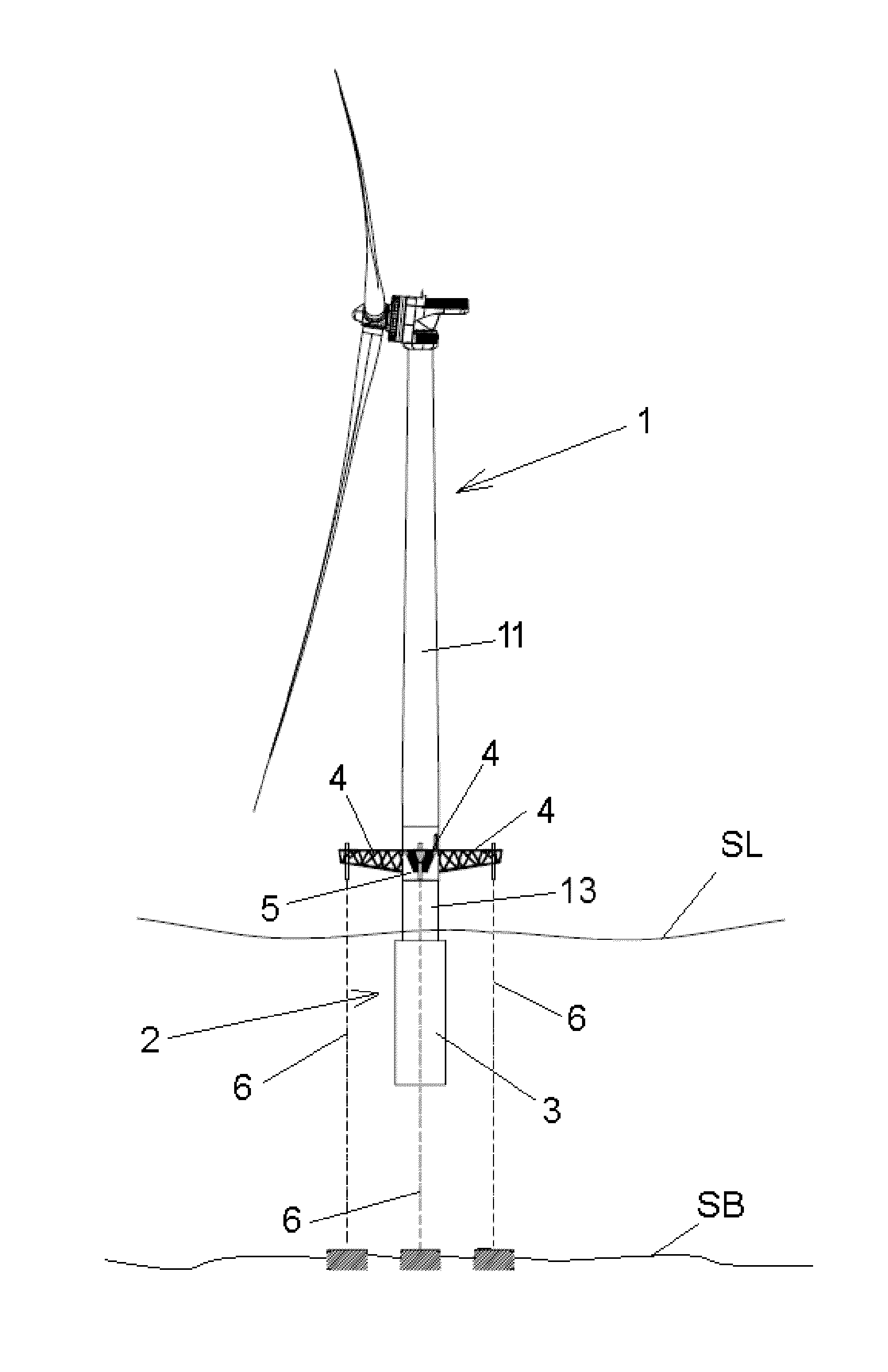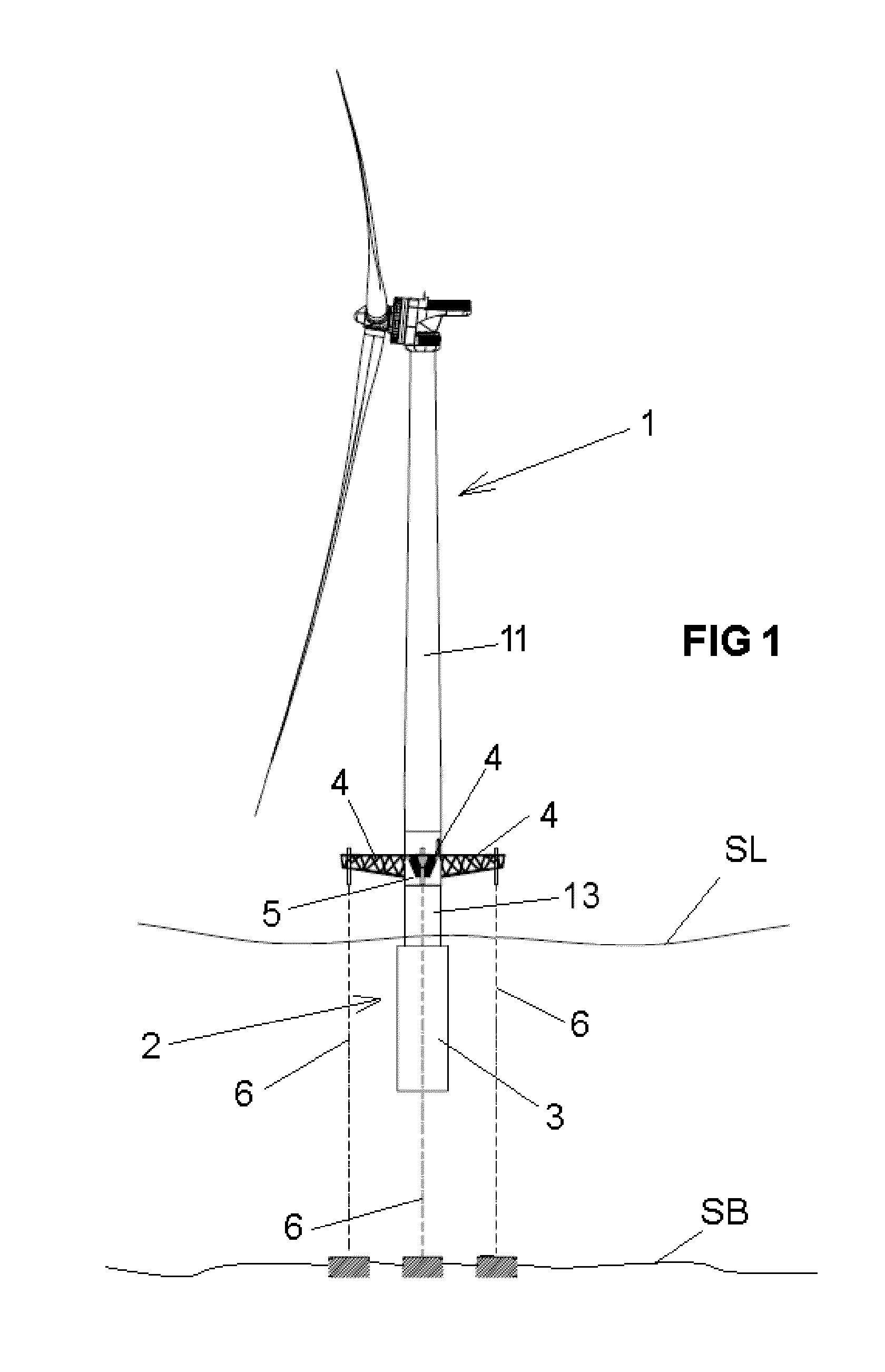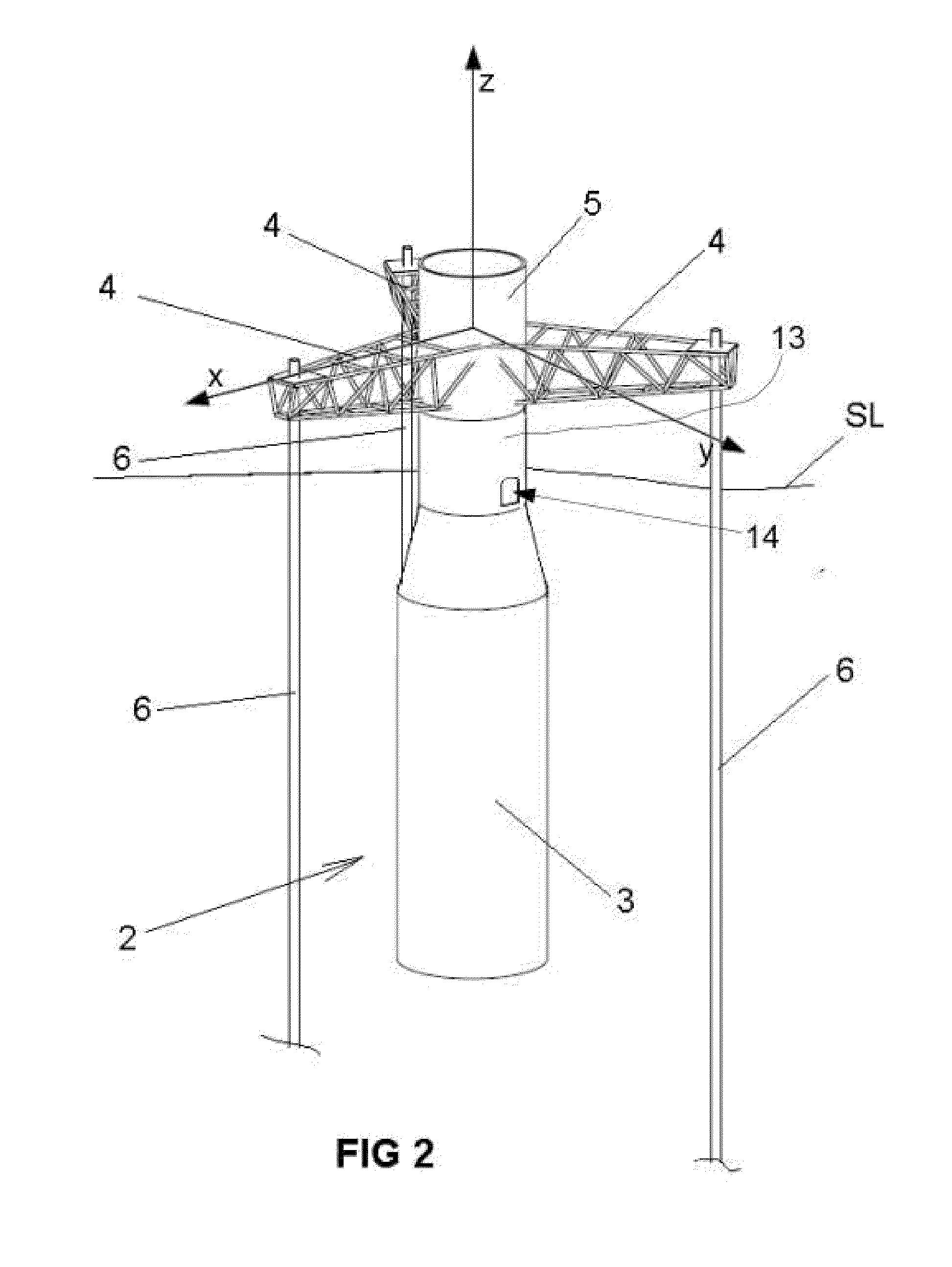Floating offshore structures
a technology of floating structures and offshore structures, applied in the direction of floating buildings, anchoring arrangements, vessel construction, etc., can solve the problems of hydrostatic pressure on the buoyancy structure, high amount of excess buoyancy and high tension in the cables, and the instability of the offshore structure, etc., to achieve simple and cost-effective solutions, and add buoyancy to the system
- Summary
- Abstract
- Description
- Claims
- Application Information
AI Technical Summary
Benefits of technology
Problems solved by technology
Method used
Image
Examples
Embodiment Construction
[0027]FIG. 1 shows an example of an offshore wind turbine of the TLP (Tension Leg Platform) type having arms 4 that in use remain above the sea level.
[0028]All throughout the present description and claims, the expression “sea level” should be understood to cover all possible heights of the surface of the sea including the highest and lowest tides and including variations due to waves.
[0029]The wind turbine 1 may comprise a buoyancy structure 2, with at least one floater tank 3. The buoyancy structure 2 may be designed such as to remain submerged in a position above the sea bed SB and below the sea level SL to provide an upward thrust for supporting the weight of the wind turbine 1 and other loads.
[0030]In order to stabilize a floating wind turbine with such a buoyancy structure, i.e. in order to restrain its six degrees of freedom (surge, sway, heave, pitch, roll and yaw) within acceptable limits, mooring lines 6 may be put under tension by the excess buoyancy provided by the float...
PUM
 Login to View More
Login to View More Abstract
Description
Claims
Application Information
 Login to View More
Login to View More - R&D
- Intellectual Property
- Life Sciences
- Materials
- Tech Scout
- Unparalleled Data Quality
- Higher Quality Content
- 60% Fewer Hallucinations
Browse by: Latest US Patents, China's latest patents, Technical Efficacy Thesaurus, Application Domain, Technology Topic, Popular Technical Reports.
© 2025 PatSnap. All rights reserved.Legal|Privacy policy|Modern Slavery Act Transparency Statement|Sitemap|About US| Contact US: help@patsnap.com



